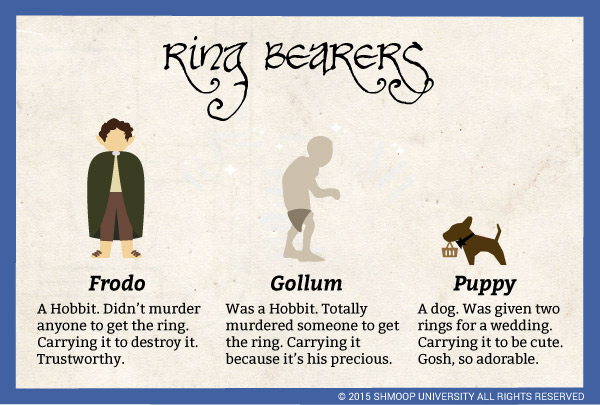
(Click the infographic to download.)
Good and evil are pretty well-defined in The Fellowship of the Ring. Here's the gist: Ring = evil; no Ring = good. The crazy thing about evil in this novel is that is has the power to turn everything else evil, too. Even the most well-intentioned characters can be turned to the dark side by the power of the Ring. Something worth fighting against, we'd say. And except for Tom Bombadil, it seems like every character is in fact involved in the battle between good and evil: this conflict is the driving force in Middle-earth, and in Tolkien's story.
Questions About Good vs. Evil
- How do Hobbits define good and evil? How about the Elves, or the Dwarves? What sense do we get of different moral world views among the good peoples of Middle-earth?
- What are some of the behavioral signs that indicate that Saruman and Boromir have gone over to the dark side? How do their speeches of temptation (Saruman to Gandalf and Boromir to Frodo) overlap stylistically?
- What makes Tom Bombadil exempt from Middle-earth's wars between good and evil? Why does he not participate in these moral conflicts? Does Tom Bombadil's neutrality in the face of Sauron become, in itself, a moral problem?
Chew on This
Boromir's fall to the Ring out of desperation to help Gondor suggests that any kind of strong personal attachment to a cause, even if that cause is a virtuous one like patriotism, may be twisted to evil ends. Ideology of any kind can become a root of evil behavior.
By conveying Frodo's unique suitability to carry the Ring because he does not want to and has little faith in his strength, Tolkien implies that the ultimate virtue in Middle-earth is not ability or loyalty alone; it is humility.